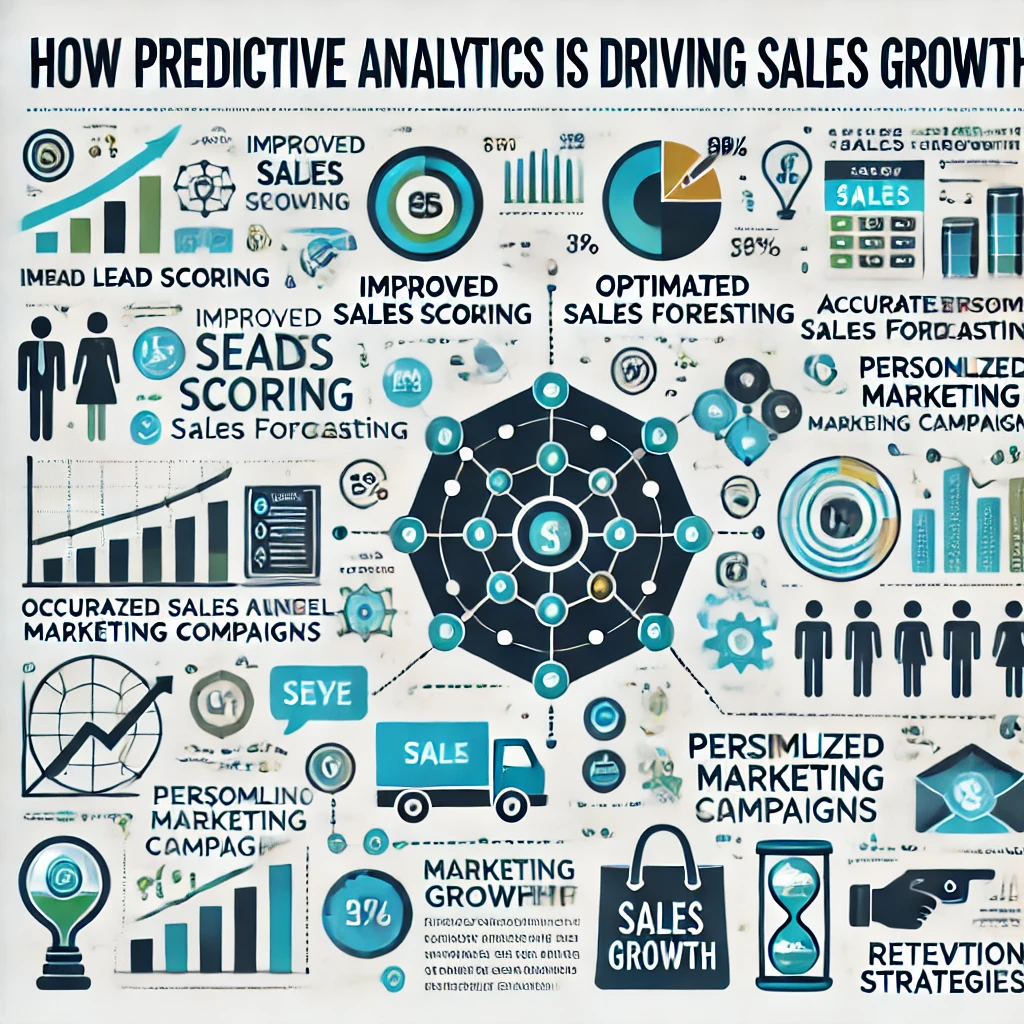Leveraging Predictive Analytics to Drive Sales Growth

In today’s highly competitive market, businesses need every possible advantage to stay ahead. Predictive analytics has emerged as one of the most powerful tools to drive sales growth. By analyzing historical data and identifying patterns, predictive analytics helps companies forecast future trends, optimize their sales strategies, and make data-driven decisions. Here’s how businesses can leverage predictive analytics to achieve significant sales growth.
Understanding Predictive Analytics in Sales
Predictive analytics involves using statistical algorithms and machine learning techniques to analyze past sales data, customer behavior, and market conditions. This helps sales teams anticipate future outcomes and understand what drives sales performance. With predictive analytics, businesses can identify which leads are most likely to convert, forecast future sales, and tailor marketing efforts to customer needs.
Key Benefits of Predictive Analytics for Sales Growth
- Improved Lead Scoring Predictive analytics allows businesses to prioritize leads by identifying which prospects are most likely to convert. By analyzing behavioral data, engagement levels, and buying signals, sales teams can focus their efforts on high-quality leads, increasing their chances of closing deals.
- Optimized Sales Funnel By identifying patterns in customer behavior, predictive analytics helps businesses optimize their sales funnel. Companies can identify at which stage customers are most likely to drop off and address those gaps. This leads to higher conversion rates and a more efficient sales process.
- Accurate Sales Forecasting Predictive models help businesses forecast future sales with greater accuracy. By analyzing historical sales data and external factors like market trends and customer sentiment, companies can make informed decisions about inventory, staffing, and resource allocation.
- Personalized Marketing and Sales Campaigns Predictive analytics enables businesses to create personalized marketing and sales campaigns based on customer behavior and preferences. This personalized approach increases customer engagement and improves the chances of converting prospects into loyal customers.
- Retention and Upsell Opportunities Predictive analytics not only helps in acquiring new customers but also in retaining existing ones. By identifying at-risk customers and understanding their needs, businesses can implement targeted retention strategies. Additionally, it helps identify upsell and cross-sell opportunities, driving additional revenue.
Steps to Implement Predictive Analytics in Sales
- Data Collection Start by gathering all available sales data, including customer interactions, purchase history, website visits, and engagement with marketing campaigns. The more data you have, the more accurate your predictions will be.
- Choose the Right Tools There are numerous predictive analytics tools available that are specifically designed for sales teams. CRM platforms like Salesforce and HubSpot have integrated predictive analytics capabilities that can help with lead scoring, sales forecasting, and personalized marketing.
- Train Your Team Ensure your sales team understands how to use predictive analytics tools effectively. Provide training on how to interpret data insights and incorporate them into their sales strategies.
- Monitor and Optimize Once predictive analytics is implemented, continuously monitor its performance and optimize your sales strategies based on the data insights. Use A/B testing to determine what works best and make adjustments accordingly.
Conclusion
Predictive analytics is transforming the way businesses approach sales growth. By leveraging data insights, companies can optimize their sales strategies, improve lead conversion, and make more informed decisions. As the technology continues to evolve, predictive analytics will become an indispensable tool for any sales-driven organization looking to thrive in today’s competitive market.






Responses